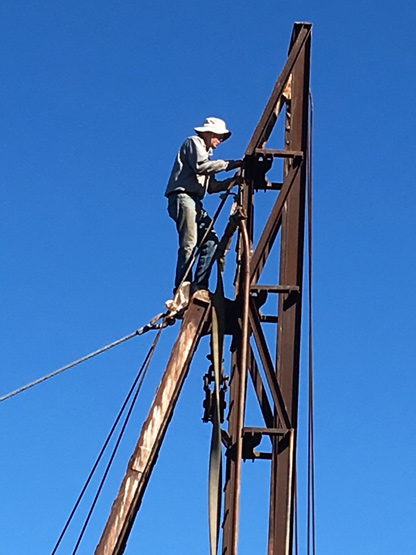
Long-time waterfront resident T.J. Nelsen has written a very personal memoir of Sausalito’s Gate 6 community: Houseboats, Drugs, Government and the 4th Estate.
Nelsen discovered the Sausalito waterfront in the early ’60s, and soon moved to Don Arques’ property at Waldo Point, where he worked at various odd jobs. In 1969 he became harbormaster, and with his pile driver, was instrumental in building the docks most of us live on today.
The book recounts Nelsen’s observances of the ’70s Houseboat Wars from the Waldo Point management’s point of view. It also contains some wonderful historic vignettes, such as his recollection of two of the founders of the Gate 6 community: Arques and George Kappas.
By 1969, T.J. writes, “no one was in charge or responsible for the property as a whole and what went on was as close to anarchy as anything I’ve ever seen.” When T.J. complained and made several suggestions for improving the situation, Arques replied, “You do it” and wound up giving him authority over the property, including the right to collect and disperse rents.
He writes:
At the same time Arques was telling me to “kick the bums out,” he would hold court with some of the same people and tell them what they wanted to hear: Why should they pay rent anyway when they were just going to be frozen out? He once did it while I was in his office waiting to talk to him, maybe forgetting I was there. He loved to stir up a fight. He also often told me what I wanted to hear, the difference being I got signatures and/or checks from him, sometimes after many tries and many delays.
The worst delay was in getting his signature on an agreement to pay for his share of the required improvements to Gate 6 Road that serves the Arques, Tellis, and Kappas houseboat properties.
If anyone is due credit or blame for the existence of the present Richardson Bay Waldo Point houseboat communities, it is George Kappas. If George, an immigrant from Greece, hadn’t filled what is now Gate 6 Road so he could get to and use the property he was paying taxes on, as well as filling the adjacent parking area for East and West Piers, neither Kappas East and West Piers, Tellis’ Yellow Ferry Harbor, Kappas Yacht Harbor, nor A-Dock and Issaquah Docks in the Waldo Point Harbor would exist today; there would be no access and no space for parking. The availability of parking being the final requirement for approval of any project or use on real property in our modem society.
In the introduction to his book, T.J. notes: “The information presented here is not the result of research, interviews, or a scholarly analysis of data, and I do not suggest it is balanced, complete, or fair to all those involved. It is simply about what I experienced and the way I saw it.” The book goes on to detail all sides of the free-spirited community: the freedom, the squalor, the creativity, the drugs, the camaraderie, and the violence that were all part of day-to-day life in the post-Haight Ashbury/Summer of Love era. T.J casts his critical eye on various sides of the controversy, including the protesters, Marin County bureaucrats, the Bay Conservation and Development Commission, law enforcement, and the media (the Fourth Estate).
Houseboats, Drugs, Government and the 4th Estate is a must read for anyone interested in the colorful and controversial history of the early houseboat community. It’s available at the Ice House (780 Bridgeway), Book Depot, Amazon.com and other online booksellers.